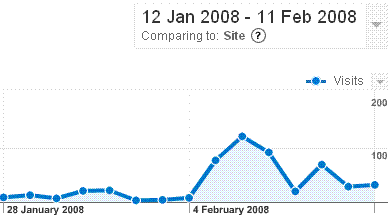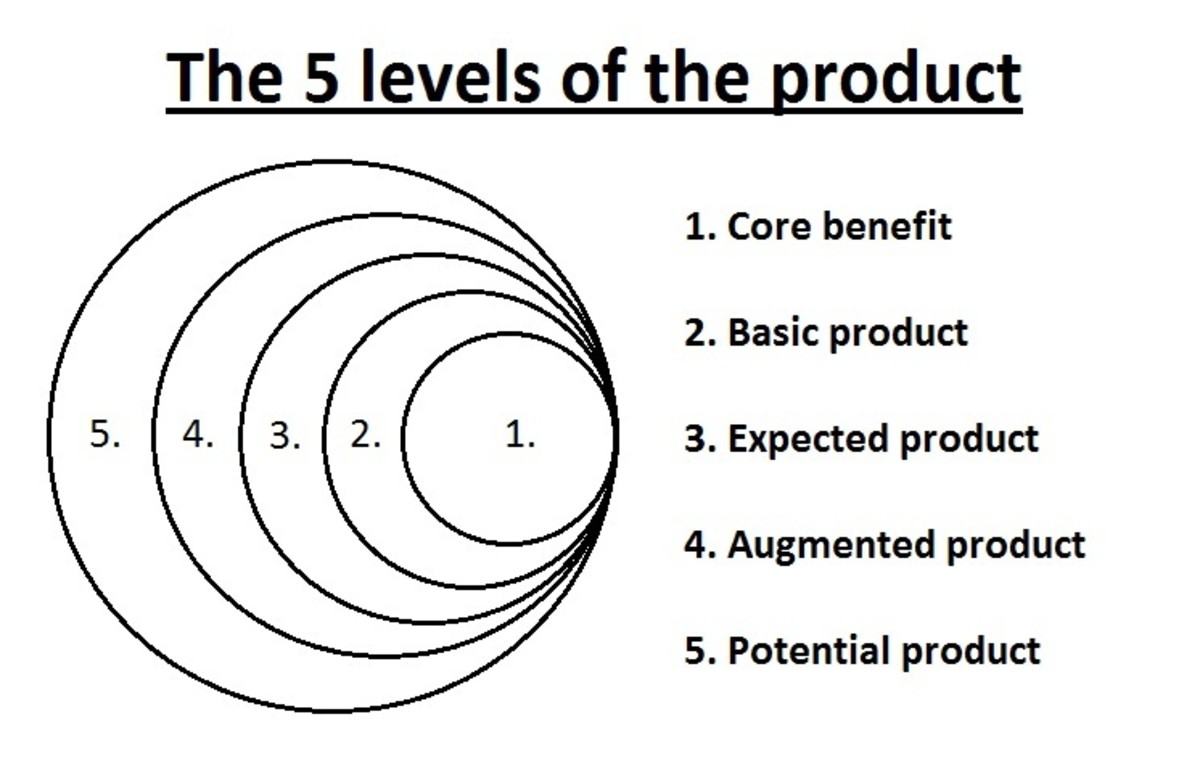The Truth about Viral and Buzz Marketing
Viral and Buzz Marketing Misconceptions
Discussing marketing strategies on the Internet, I often hear the statement:
"I'm going to use viral marketing to draw in thousands of visitors!"
Being the curious sort, I dig a little deeper to find out their strategy for creating something that people will spread virally. What do I find? Usually, they don't really have one. They've just heard about something called viral marketing and thought to themselves, "of course thousands of people want to share what I create!"
Wrong!
It takes a lot for people to share something. They may find it valuable or funny, butthat doesn't mean they'll share it with all their friends.
Social bookmarking sites now make it a lot easier to share content, but creating a viral marketing campaign is something completely different. Which leads to the most popular misconception:
- If it's good content, it will spread!
Having good content doesn't mean it will spread at all. You need outstanding content. And then you really need to put some effort in to get it to spread. Which leads us to the second biggest misconception:
- People will naturally share great stuff
This is a lie. There are a percentage of our community that will share everything they find of value. But for the most part, I don't think people share that much content on the Internet.
I think it can sometimes go against our basic psychology to share the content we find. It comes back to a fear of rejection by annoying your friend with something worthless or untrue.
Unfortunately, the fear of rejection seems to be overridden when it comes to email chain letters. The curse of a bad sex life is apparently much scarier.
Which brings us to an interesting point. People will happily forward email jokes around the office all day, but don't take the same approach when it comes to finding a great website. More on this later.
Not bad out of the gate

What are Viral and Buzz Marketing?
First some scientific sounding definitions:
Viral Marketing - When your message is spread from person to person.
Buzz Marketing - Using content that creates excitement and interest.
Most of the time these go hand in hand and it's hard to distinguish exactly what the difference is. Basically, buzz marketing is creating content worth sharing while viral marketing is the actual sharing part.
It's important to note that they can be separate. Buzz marketing is specifically creating content that is exciting and different in the hope of it spreading. Some examples include "Self improvement advice from the Devil," "10 Step guide to thinking like a LOSER," and "How Dumb Are You?." These all come from the leader in buzz marketing, Dean Hunt.
Viral content might not be exciting or provocative as buzz marketing. For example, Hotmail's famous viral marketing of putting "sign up now for a free Hotmail account" at the bottom of each email. In this case the distribution was created with the viral component rather than people spreading the message voluntarily.
However, for the purpose of this Hub I'm just going to call the process viral marketing unless I'm breaking down the components. Firstly, because the result you want is something to "go viral". And secondly, that's usually the term most people are familiar with.
So how do I Create a Viral Marketing Campaign?
That's really what this Hub's about so let's cut to the chase. For me, there are a series of steps you need to go through to successfully execute a viral marketing strategy. If you miss one of these steps, your campaign will crash and burn.
The steps (in order) are:
- Creating something worth sharing
- Making it incredibly shareable
- Building the fire
- Fanning the flames
So let's discuss them all in detail.
1. Creating Something Worth Sharing
This seems to be the area where most people fall down using viral marketing. They just think they have to have some super idea that will blow the socks off everyone. The fact of the matter is, the content doesn't actually have to be that great.
I know, I know, I talk all the time about creating amazing content. And you do have to create something worth sharing. But your aim here isn't to create the world's greatest article or blog post and that's it. Creating interesting content should be something you can do on a regular basis.
Let's say that again, creating interesting content should be a regular thing. Or else why should anyone bother to visit your website?
Maybe that's oversimplifying it a little but what I really want to achieve from this Hub is that you go out and try it. Because that's when you really start to learn, once you are trying to do it yourself.
The point I'm trying to make is to just get something out there. As you publish more content, you'll learn a lot and this process won't be so daunting.
Here are some rules from our favourite buzz marketing guru, Dean Hunt:
- A global appeal - The more people that it appeals to, the more likely it'll spread.
- The negativity slant - Bad news always travels faster.
- The killer headline - Note his examples above and get attention.
- 10 steps to buzz heaven - People love lists and other easily digestible content like pictures and video.
- Stand out from the crowd - It takes a lot to get attention now...so be DIFFERENT!
- Curiosity killed the cat - Make them desperate to find out what you're talking about.
- Image is everything - Add a good image to liven up content.
- Perfect packaging - When visitors arrive at your site it needs to look good and credible.
- Shifting the focus - Use the second person so they feel involved in the story.
If you follow these tips when creating content, it gives it a much higher chance of creating buzz and going viral. For more explanation you can check out Dean's free report at Web Traffic Orgasm. Catchy title? Of course!
2. Making it Incredibly Shareable
Think about all those annoying email chain letters you get. Think about all those email jokes you receive everyday. Why do you receive these? Because it's easy as pie for the sender to forward them on to you.
- Read something I like
- Click forward
- Enter email addresses
- Click send
Now think about what happens when you find something funny on a website.
- Find website I like
- Open email program
- Create new email
- Enter email addresses
- Write short description of website
- Copy and paste website url into email
- Click send
Notice we almost doubled the steps, and who knows how much more time the second one took. You even had to write stuff!
So, how do we make the content as shareable as possible? Well there are a few ways that websites are catching up with the email forwarding system.
Submission Buttons
These submit the article to websites like digg, delicious, and Stumble Upon. Notice however that you still need an account to use these websites. So if your visitors don't have accounts where they can just click the button, they're unlikely to share it.
Tell a Friend Generators
These are automated forms that allow you to enter your email address and then the email addresses of your friends. You can even have a default message to save them writing one. The trick is finding one that doesn't get in the way, allows submission to multiple friends in one email, and people know how to use.
For example, I have a ShareThis button on all of my website. But it only let's you email one person at a time. Plus you have to type in the email address of the person and you can't just select it from your address book.
Think about it...and make it easy!
You should realise by now that if you made sharing as easy as the forwarded email example, creating a viral marketing campaign could be easy as pie. So have a think about how people will distribute your killer content and make it as easy as possible.
3. Building the fire
I personally believe that this is the most important point of creating a viral marketing campaign. By building the fire, I mean engineering the campaign correctly so it spreads as quickly and as wide as possible.
Think about a fire, first you use a match to light some rolled up newspaper, the paper spreads the fire to the kindling, and the kindling spreads it to the main logs.
This is exactly how your viral marketing campaign should work:
- The match is your website where you put the content.
- The paper is the initial people you tell about the content I.e. your regular blog readers, people on forums, and friends.
- The kindling is the next stage, where other blogs and people pick up the story.
- The logs are when bigger blogs and forums start sending traffic your way. Plus you might have just appeared on digg or Stumble Upon.
- And the full forest fire starts when you have gathered the momentum on the social bookmarking sites and thousands of visitors start to appear.
If you look at this list there are several actions you need to take to get that initial growth. Writing a great piece of buzz content doesn't stop there, you have to start it spreading. Some websites or blogs with a large amount of traffic won't have this problem, but for most of us it's time to roll up your sleeves.
The Paper
You need to think hard about where you will distribute the content. Just putting it on your blog won't guarantee success. You need to make people aware that this is something special. You need to give them the hint to share it as well.
Adding something like "share this quiz with your friends" to the end of your post could make all the difference between success and failure.
Come up with a list of places where you think you could distribute the content. If it's a forum you've never visited before, you might want to visit in advance and build up some points rather than just showing up and spamming your link.
You should be visiting these places as part of your marketing anyway, so think about which of these channels you could be using.
If the content is good and you put some effort into this step, you can achieve a relative level of success, pulling in hundreds or thousands of people to your website. This is not a difficult level to achieve and if you're like most website owners, this kind of traffic could make a huge difference to your website.
4. Fanning the Flames
This is where you're working hard to turn your fire into a forest fire. When you see results in a forum, go in there and participate in the conversation. If someone links to your blog in a post, go and comment on it.
Basically, you look for anywhere the sparks may have landed and do your best to turn those sparks into their own fires.
This can be very time consuming but it's an incredibly exciting part of the process. Just seeing who is picking up on the story and seeing what people think really gives you a great feeling.
There's no big trick to this part, just watch your statistics and find the sparks. Putting in some effort during the weeks following the release of the content will only increase the results your receive.
Never surrender, never give up!
At the end of the day, you can't control people. They will share what they feel like using methods they decide on.
So if your first viral marketing campaign doesn't reach the front page of digg, don't worry about it. The professionals aren't hitting every single idea out of the park either. But they are trying lots and lots of ideas and measuring the results.
While the results can look quick and easy when it comes to this type of marketing, I can assure you they aren't. The people that are truly successful are just like people who are successful in every other venture. They practice!
They learn as much as they can and put it to use. They watch the results and try again. Perseverance will be your greatest weapon to winning the battle.
An interesting insight Dean gave me was that sometimes a blog post will go viral 6 months after it's been posted. After all the strategies and all the experience, sometimes it can just take time.
Literally today, I just logged in to find 158 new referrals from Stumble Upon over the weekend. This was for a post called "The 5 Worst Web Designers in the World" over a month ago. That takes it to 2,076 page views and 15 comments so far.
Following this guide will get you results. If you keep expanding on your knowledge you could be the next big viral or buzz marketer.
Good luck!
PS: Thoughts and comments are rewarded with imaginary cookies! Have you tried these techniques? I'd love to hear how you got on.
Buzz Marketing Examples
- Self Improvement Advice from the Devil
Tired of Tony Robbins and Dr Phil? It's time to listen to someone you can really trust! - 10 Step guide to thinking like a LOSER
Everyone needs goals. And if you have none, it's best to start at the bottom. - How Dumb Are You?
5/5 on this quiz will mean you instantly get any job you apply for...or your money back! - The 5 Worst Web Designers in the World
See how I related this to my industry but still created something interesting and funny.
Buzz Marketing Resources
- DeanHunt.com - Making Success Fun
Dean's personal blog with great examples of some of his campaigns. - Buzz Marketing - The Case Study
Dean Hunt's first case study on creating buzz content...and orgasms...





